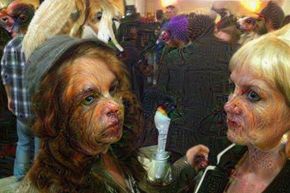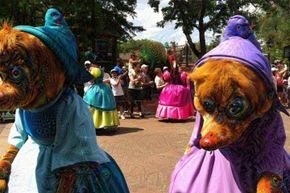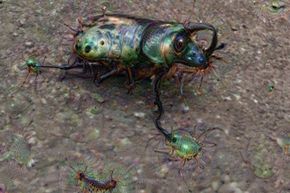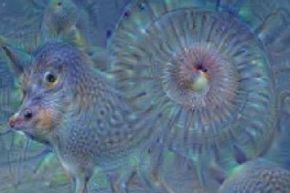The millions of computers on our planet never need to sleep. But that doesn't stop them from dreaming. While we humans work, play and rest, our machines are ceaselessly reinterpreting old data and even spitting out all sorts of new, weird material, in part thanks to Google Deep Dream.
Deep Dream is computer program that locates and alters patterns that it identifies in digital pictures. Then it serves up those radically tweaked images for human eyes to see. The results veer from silly to artistic to nightmarish, depending on the input data and the specific parameters set by Google employees' guidance.
Advertisement
One of the best ways to understand what Deep Dream is all about is to try it yourself. Google made its dreaming computers public to get a better understanding of how Deep Dream manages to classify and index certain types of pictures. You can upload any image you like to Google's program, and seconds later you'll see a fantastical rendering based on your photograph.
The results are typically a bizarre hybrid digital image that looks like Salvador Dali had a wild all-night painting party with Hieronymus Bosch and Vincent van Gogh. Leaves, rocks and mountains morph into colorful swirls, repetitive rectangles and graceful highlighted lines.
Where before there was an empty landscape, Deep Dream creates pagodas, cars, bridges and human body parts. And Deep Dream sees animals ... lots and lots of animals. Upload a portrait of Tom Cruise, and Google's program will rework creases and spaces as dog heads, fish and other familiar creatures. Only these aren't normal-looking animals — they're fantastical recreations that seem crossed with an LSD-tinged kaleidoscope. They're eerily evocative and often more than a little terrifying.
Clearly, Google isn't throwing nightly raves and feeding its computers hallucinatory chemicals. Somehow, the company is guiding those servers to analyze images and then regurgitate them as new representations of our world.
How it all works speaks to the nature of the way we build our digital devices and the way those machines digest the unimaginable amount of data that exists in our tech-obsessed world.
Advertisement






